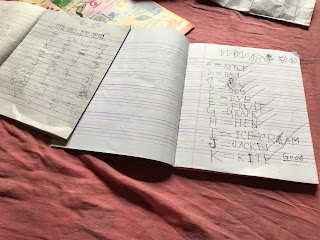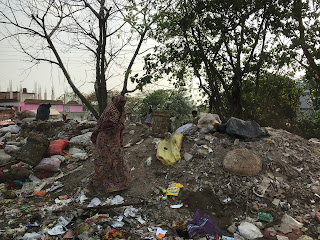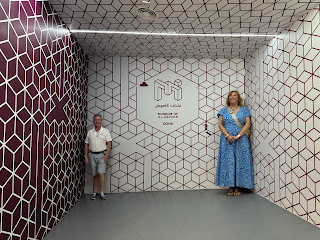Home Visit
Today we are to be driven to the outskirts of Dhaka, 60km to the south east. The village is Nawabganj. On route we pick up Bipul, Sadia and Raficka. Our remit to day is be introduced to the IPEP programme (Inclusive Protection and Empowerment Project for the Children with Disabilities). This is a programme that aims to protect children from all forms of violence, abuse, and exploitation including child marriage and gender based violence. We also work to ensure that children who are not receiving appropriate, continuous and quality care from family members or caregivers are able to live in a protective environment. In Nawabganj the focus is to provide help to children with disabilities and encourage them to be apart of the community.
On our drive out to Nawabganj we get a chance to see some of the countryside, this is a pleasant change from the dirt of Dhaka, but we also see that Dhaka is not the only place with filth and rubbish on the streets. We pass rice fields, wheat fields and brick making plants. Along the route we have to pay a make shift toll to cross a bridge, we are not too sure if this is a legitimate toll or something else, but payment is made anyway. When we arrive in Nawabganj we drive over a cricket pitch to the local primary school. Here we are taken to one of the classrooms were we meet the local IPEP committee. This committee is made up of local persons and includes the leader of the mosque and other local dignitaries. The committee we are told meets every 2 months to discuss its objectives and strategies with the aid and support of Save the Children and the Centre for Services and Information on Disability. It seems that we are being ambushed today as our meeting is a forum fro the committee to vent there concerns, the main concern being that the IPEP programme is to be discontinued in July. The committee leader make as passionate pleas for more funds and the programmes continuance. I am not sure why they are addressing us with this, but I assume that they really just need to vent. We ask them what they have done to try and become self sufficient, the project is three years old. It would appear that little has been done, but then again the locals really do not have anything to give financially and physically I would suggest that there main aim is just to survive day to day, so are unable to provide time. However I do wonder why the mosque cannot provide more community support. Talking of time the men on the committee have to leave at 12:00 to attend prayers, allowing the women on the committee to speak out. It is funny that they have time for prayers but no time to help the kids.
After the ambush we are taken upstairs to what to visit the local kids club and be introduced to the kids on the programme. The kids are a mix of able bodied and disabled. They are all smiles and happy and are interested in our story. we find out that they really enjoy the kids club and it enables them to have playtime and discuss issues and again just be kids for a short time. We pose for pictures and take selfies before we are taken to meet the mothers of some of the disabled children.
Here are told of the items that the programme has provide, such as wheelchairs, hearing aids, and white canes. This is again a plea to keep the programme alive. During this meeting one of the kids turns up to be with his mother. He is a blind child and we discover that the blindness is congenital, his father and younger brother are also blind. It is here that we discover that a lot of the causes of disabilities can be attributed to interbreeding. The child I seems a little nervous but does answer some of our questions. We found out that he does not attend a normal public school and cannot read braille or any equivalent. He does however attend religious school where learns religious songs! We leave this child and mother with her saying that she may consider a public school, but I suggest that this will not happen.
Before we leave the village we have coconut water from the coconut and pose for more pictures with some local kids, who are keen to practice there English. Pictures done we head of to Red Chillies, a local café for lunch. I have something that is called a chicken wing (no meet what so ever on this wing) and rice. As is custom I ate lunch with my right hand. During the lunch we are questioned by the local security officers. This is handled by our hosts and the offices go away happy enough.
Lunch consumed we head back to a district on the outskirts of Dhaka, by the river. Again there is just rubbish strewn everywhere. Maria would not survive here. Eventually we are taken down some back streets and along an ally into an 'apartment' block. We climb three floors past dirt and rubbish were we meet Rabbi and boy suffering from Muscular Dystrophy. Rabbi is with his mother and two siblings. Rabbi is 14 years old and his life expectancy is around 27 years. He is one of the kids that Save the Children has helped. Through the good work provide by Save the Children, Rabbi has received a wheelchair and is now able to attend school and his mother receives social payment of approximately $5 per month. As I mentioned Rabbi lives on the third floor, so in order to get to school he has to be carried down stairs, along with his wheelchair and then wheeled along the on paved road to the school. Apparently this is done daily. Rabbi shows us some of his school work, English letter writing and some of his drawings. The mother explains that the programme has helped both of them and she admits that she used to be violent towards Rabbi, partly caused by her depression. She states that this is nolonger the case and that she is more understanding having been counselled by the STCand its partners. Through out our visit she tenderly strokes Rabbi showing affection. Rabbi also appears close to his mother and states that things are much better now.
The 'apartment' that they live in is made up of two rooms (two bedrooms). I did not mange to see if it had any kitchen or bathroom, but the two rooms cater for the two parents and then the three children. There is no air-conditioning and just basic lighting.
During the visit the neighbouring kids turn up and want to get in on the action. Among them is Rabbi's best friend, an able bodied boy.
Visit completed we again take our pictures and selfies and head back to the Hotel after a long day. As is the case in Dhaka it takes us about 2.5 hours to travel 10km.
On our drive out to Nawabganj we get a chance to see some of the countryside, this is a pleasant change from the dirt of Dhaka, but we also see that Dhaka is not the only place with filth and rubbish on the streets. We pass rice fields, wheat fields and brick making plants. Along the route we have to pay a make shift toll to cross a bridge, we are not too sure if this is a legitimate toll or something else, but payment is made anyway. When we arrive in Nawabganj we drive over a cricket pitch to the local primary school. Here we are taken to one of the classrooms were we meet the local IPEP committee. This committee is made up of local persons and includes the leader of the mosque and other local dignitaries. The committee we are told meets every 2 months to discuss its objectives and strategies with the aid and support of Save the Children and the Centre for Services and Information on Disability. It seems that we are being ambushed today as our meeting is a forum fro the committee to vent there concerns, the main concern being that the IPEP programme is to be discontinued in July. The committee leader make as passionate pleas for more funds and the programmes continuance. I am not sure why they are addressing us with this, but I assume that they really just need to vent. We ask them what they have done to try and become self sufficient, the project is three years old. It would appear that little has been done, but then again the locals really do not have anything to give financially and physically I would suggest that there main aim is just to survive day to day, so are unable to provide time. However I do wonder why the mosque cannot provide more community support. Talking of time the men on the committee have to leave at 12:00 to attend prayers, allowing the women on the committee to speak out. It is funny that they have time for prayers but no time to help the kids.
After the ambush we are taken upstairs to what to visit the local kids club and be introduced to the kids on the programme. The kids are a mix of able bodied and disabled. They are all smiles and happy and are interested in our story. we find out that they really enjoy the kids club and it enables them to have playtime and discuss issues and again just be kids for a short time. We pose for pictures and take selfies before we are taken to meet the mothers of some of the disabled children.
Here are told of the items that the programme has provide, such as wheelchairs, hearing aids, and white canes. This is again a plea to keep the programme alive. During this meeting one of the kids turns up to be with his mother. He is a blind child and we discover that the blindness is congenital, his father and younger brother are also blind. It is here that we discover that a lot of the causes of disabilities can be attributed to interbreeding. The child I seems a little nervous but does answer some of our questions. We found out that he does not attend a normal public school and cannot read braille or any equivalent. He does however attend religious school where learns religious songs! We leave this child and mother with her saying that she may consider a public school, but I suggest that this will not happen.
Before we leave the village we have coconut water from the coconut and pose for more pictures with some local kids, who are keen to practice there English. Pictures done we head of to Red Chillies, a local café for lunch. I have something that is called a chicken wing (no meet what so ever on this wing) and rice. As is custom I ate lunch with my right hand. During the lunch we are questioned by the local security officers. This is handled by our hosts and the offices go away happy enough.
Lunch consumed we head back to a district on the outskirts of Dhaka, by the river. Again there is just rubbish strewn everywhere. Maria would not survive here. Eventually we are taken down some back streets and along an ally into an 'apartment' block. We climb three floors past dirt and rubbish were we meet Rabbi and boy suffering from Muscular Dystrophy. Rabbi is with his mother and two siblings. Rabbi is 14 years old and his life expectancy is around 27 years. He is one of the kids that Save the Children has helped. Through the good work provide by Save the Children, Rabbi has received a wheelchair and is now able to attend school and his mother receives social payment of approximately $5 per month. As I mentioned Rabbi lives on the third floor, so in order to get to school he has to be carried down stairs, along with his wheelchair and then wheeled along the on paved road to the school. Apparently this is done daily. Rabbi shows us some of his school work, English letter writing and some of his drawings. The mother explains that the programme has helped both of them and she admits that she used to be violent towards Rabbi, partly caused by her depression. She states that this is nolonger the case and that she is more understanding having been counselled by the STCand its partners. Through out our visit she tenderly strokes Rabbi showing affection. Rabbi also appears close to his mother and states that things are much better now.
The 'apartment' that they live in is made up of two rooms (two bedrooms). I did not mange to see if it had any kitchen or bathroom, but the two rooms cater for the two parents and then the three children. There is no air-conditioning and just basic lighting.
During the visit the neighbouring kids turn up and want to get in on the action. Among them is Rabbi's best friend, an able bodied boy.
Visit completed we again take our pictures and selfies and head back to the Hotel after a long day. As is the case in Dhaka it takes us about 2.5 hours to travel 10km.
































































Comments
Post a Comment